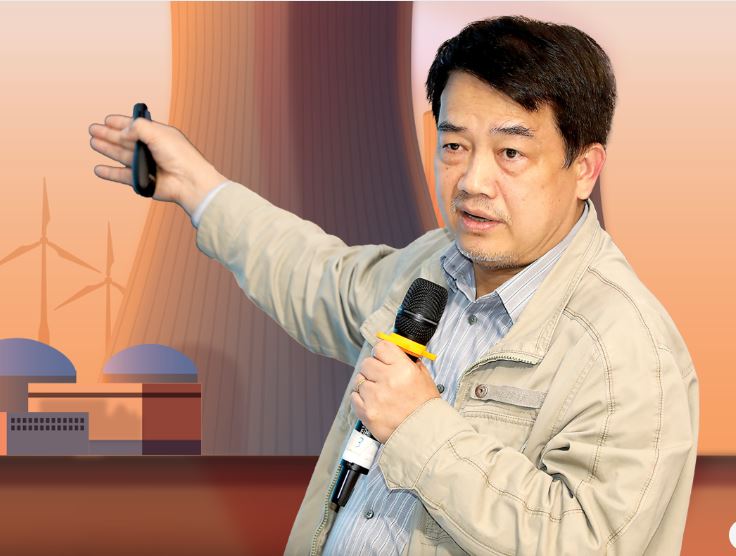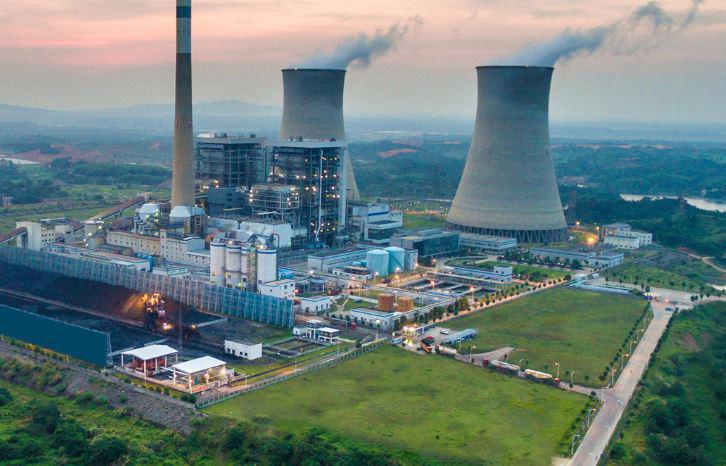Nuclear power has been included in the first adjustment to the National Power Development Plan VIII (PDP8), with a projected capacity of 6,000-6,400 MW and operations expected to begin between 2030 and 2035. What is VINATOM’s perspective on this?
Nuclear power plays a crucial role in the revised PDP8. However, determining the appropriate capacity must be based on scientific evidence and comprehensive calculations. It is also essential to consider the development strategy, potential partners, and the technology to be used, as different countries employ varying technologies and reactor capacities. Once the decision to develop nuclear power is made, it must be implemented at a sufficient and significant scale to meet the set objectives and ensure the sustainable and economically-viable development of the nuclear power industry.

Given Vietnam’s current situation, how many reactors should be developed?
VINATOM serves as a consulting body for nuclear power technology and safety research. In my view, before developing nuclear power, Vietnam must first assess its existing capabilities and what it can achieve. Between 2010 and 2016, it made preparations and capacity-building efforts in this endeavor.
However, we recognize that Vietnam’s capability to implement nuclear power remains limited. At this stage, we can realistically deploy only 2-4 reactors. Vietnam must develop a comprehensive, well-structured, and long-term nuclear power program in the future.
It is actively preparing to implement the Ninh Thuan Nuclear Power Project [in the south-central region]. The country’s nuclear power development policy is based on utilizing advanced and proven safe technologies that have been successfully built and operated in other countries.
In the initial phase, Vietnam should adopt Generation III nuclear technology, which has already been deployed in multiple countries worldwide. This technology features large installed capacity, ensuring sufficient electricity supply in the early stages of its nuclear power development.
Vietnam has also prepared the necessary infrastructure and workforce in previous years. This means that its existing human resources and infrastructure are aligned with large-capacity, advanced, and safe Generation III reactors.
What foundations and advantages does Vietnam have for developing nuclear power safely and sustainably?
Vietnam has considered nuclear power for decades, preparing its workforce by training personnel in the Soviet Union and other socialist countries. The National Assembly (NA) approved the Ninh Thuan Nuclear Power Project in 2009 but suspended it in 2016. On November 25, 2024, the 13th Party Central Committee agreed to restart the project, and the 15th NA later passed a resolution supporting this policy. Amendments to the Law on Electricity have also created a legal framework for nuclear power development.
The decision to restart the nuclear power project marks a significant step forward. Given the current context, reviving the Ninh Thuan Nuclear Power Project is not only a solution to national energy security but will also contribute to the transition to a green and sustainable economy, elevating Vietnam’s scientific, technological, and industrial development to new heights.
I believe the most critical advantage in developing nuclear power in Vietnam is the policy direction and commitment from the Party and the State as well as public consensus.
Additionally, Vietnamese people have a strong passion for research and discovery and excel in natural sciences, making them fully capable of advancing science and technology to support national economic and social development, including nuclear power and atomic energy. Developing nuclear power will further drive scientific, technological, and industrial growth in Vietnam.
Furthermore, Vietnam has strong international partnerships with countries advancing nuclear power development and enjoys significant support from these nations as well as from the International Atomic Energy Agency (IAEA). Such factors create favorable conditions for Vietnam to successfully implement its nuclear power projects.
What challenges do you see in Vietnam’s nuclear power development?
Restarting the nuclear power project after an eight-year suspension is a positive step. However, successful implementation requires a highly-skilled workforce in research, management, and operations, along with strong technological and industrial capabilities to ensure safe and efficient plant construction and operation.
The IAEA outlines 19 key infrastructure areas necessary for nuclear power development, with human resources being one of the most critical. Vietnam must invest in training top nuclear power experts to ensure long-term sustainability. Nuclear safety depends heavily on human factors, making workforce development the key to success.
Vietnam must also strengthen its nuclear regulatory framework and overall infrastructure. Challenges such as high capital investment and radioactive waste management can be addressed through collaboration with international partners and lessons from experienced nuclear nations.
How can Vietnam address the challenge of developing a skilled nuclear workforce?
First, it needs a well-trained workforce to operate nuclear power plants. This requires specialized university education, postgraduate training, and hands-on experience. Training reactor operators alone takes about ten years, and Vietnam must leverage domestic and international resources in this effort.
Second, research and development experts are essential to advancing nuclear technology and ensuring long-term industry growth. While not as immediately urgent as plant operators, they play a crucial role in sustaining the sector.
Third, regulatory authorities must be established to oversee safety compliance and legal enforcement. Typically drawn from experienced industry professionals, these experts ensure nuclear power development aligns with safety and environmental standards.
A national nuclear workforce strategy is essential, combining domestic and international training programs. Vietnam can learn from countries with established or newly-developed nuclear power sectors.
Currently, Vietnam is building nuclear research capabilities to support the safe and sustainable development of its nuclear power program in the future.
Vietnam’s policy of developing nuclear power will open up opportunities for and build capabilities in various industries. Could you elaborate on these opportunities?
Nuclear power is highly specialized, and ensuring safety is paramount. Implementing a nuclear power project requires strict adherence to a well-defined process.
As the nuclear power project progresses, it will create opportunities to build capabilities and foster the development of science and technology as well as various industries such as design, consulting, mechanical engineering, materials, and metallurgy, which are critical for manufacturing equipment.
In addition, nuclear power presents opportunities to develop capabilities in fields such as automated control, reactor control, chemistry, and water treatment at nuclear power plants.
These foundations will contribute to national development. In reality, all 32 countries with nuclear power industries are developed nations with high per capita income, having undergone strong growth in science, technology, and industry. Developing nuclear power will enhance domestic capabilities and meet the need for clean, green energy to support national growth.
What can Vietnam contribute to the process of developing this nuclear power project?
During project implementation, Vietnam will strive to absorb as much advanced technology as possible. I believe that it can gradually participate in the construction process, from manufacturing basic equipment to more complex ones that require high technology.
Along with this, Vietnam will progressively train its domestic workforce to master the process, understand technology and design, perform calculations, and ensure safety monitoring.
Vietnam will also implement the project based on international experience and practices. According to the experience of countries with nuclear projects, the main contractor begins with the basic design phase, followed by technical design and construction to ensure the highest safety standards.
In the nuclear industry, it is impossible for one company to design the basic layout and then hand it over to another company to carry out the technical design. This is because nuclear power is inherently tied to safety. The safety design must be based on specific principles and philosophies that guide the entire process from simple to complex stages, including the construction implementation.
Through cooperation with technology transfer countries and project implementation, Vietnam will have the opportunity to engage in areas where we have capabilities, while also receiving support to enhance domestic capacity, gradually moving towards localization.
The amended Law on Atomic Energy is being finalized for presentation to the NA, aiming to institutionalize the policy of developing atomic energy for peaceful purposes. What new issues and nuclear power provisions does the draft law include?
The Ministry of Science and Technology is actively working on developing, consulting, and finalizing the amended Law on Atomic Energy to present to the NA in the near future.
Drafting agencies are making every effort to ensure a high-quality law that will contribute to the smooth development of nuclear power in Vietnam. One of the core issues in the amendments to this law is to create a comprehensive and strict legal framework for the research, application, and development of nuclear technology, ensuring the safe and sustainable development of nuclear power.
The draft law also includes provisions for the application of atomic energy in various other sectors, such as agriculture, industry, healthcare, and environmental resources.
Nuclear power is a necessary energy source for Vietnam’s future, driving scientific, technological, and industrial development. More importantly, the energy source does not emit CO2, contributing to green and sustainable growth. Additionally, as coal-fired power is phased out, Vietnam must develop nuclear power as a stable baseload energy source to support the growth of other green technologies.






![[Interactive]: Economic overview - November 2025](https://premedia.vneconomy.vn/files/uploads/2025/12/08/ec3e68f1536d4114ba47b1f76a4618ab-55183.png?w=400&h=225&mode=crop)


 Google translate
Google translate